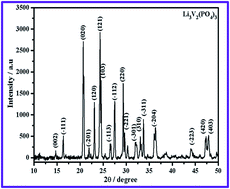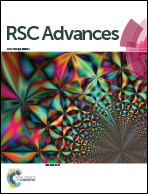Role of carbon content in qualifying Li3V2(PO4)3/C as a high capacity anode for high rate lithium battery applications
Abstract
Nanocrystalline Li3V2(PO4)3 has been prepared by the oxalic dihydrazide assisted combustion (ODHAC) method, and the corresponding Li3V2(PO4)3/C composites containing different concentrations of super P carbon, viz. 10, 20 and 30 wt% have been explored individually as anodes for lithium batteries. Among the chosen composites, Li3V2(PO4)3/C-20 exhibits superior electrochemical properties, thus recommending a carbon content of 20 wt% as an optimum amount required to improve the electrochemical properties significantly. An initial capacity of 500 mA h g−1 and a progressive capacity of ∼400 mA h g−1 up to 100 cycles have been delivered by a Li3V2(PO4)3/C-20 anode with an admissible capacity fade of 20%, especially when cycled at a current density of 100 mA g−1. The optimized Li3V2(PO4)3/C-20 composite thus demonstrates itself as a high capacity anode that is suitable for high rate applications by way of exhibiting appreciable capacity values of 450, 350, 302 and 220 mA h g−1, under the influence of 100, 200, 300 and 400 mA g−1 current density.


 Please wait while we load your content...
Please wait while we load your content...